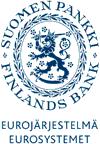 Scientific Monographs, Bank of Finland
Scientific Monographs, Bank of Finland
No E:20/2000:
Technological Transformation and Retail Banking Competition: Implications and Measurement
Jukka Vesala ()
Abstract: The study analyses the effects on banking competition of
the changes in banking delivery and information collection technologies and
of the rivalry from outside the traditional banking sector. Key
implications for monetary, regulatory and competition policies are also
addressed.
Evidence is provided that liberalization increased banking
competition in Europe. In a mostly deregulated environment, technology is
argued to be of major importance for competition. The study argues against
the prevalent spatial modelling of banking competition due to the
difficulty of representing remote access and nonbank activity. Instead, a
novel two-stage model (delivery capacity, then loan and deposit pricing
decisions) is developed based on multidimensional differentiation theory.
According to the results, benefits that clients derive from branch or ATM
proximity, additional outlets, or superior service quality can maintain
pricing power for banks. Technological development reduces these benefits
and generates a permanent increase in competition. The optimal sizes of
branch and ATM networks decline. Network cooperation reduces network sizes,
but is not necessarily harmful, as price competition is stimulated.
An
empirical implementation of the model is presented for the Finnish loan and
deposit markets. Banks’ pricing power is found to be entirely due to their
branch network differentiation and size in the loan markets, and to exist
mainly in household lending. In contrast, price coordination was found to
likely characterize deposit pricing. The ability to distinguish
differentiation from collusion is a new contribution. Banks’ pricing
advantages were found to be diminishing in all lending and especially
deposit-taking activities, following the technological development, which
indicates reduced significance of branches for clients.
Technological
development, growing nonbank activity, deepening capital markets and
weakening price coordination are found to enhance the efficiency of
monetary policy transmission into lending (and deposit) rates. The results
are relevant for the common euro area monetary policy, since they show the
dependence of the transmission on particular structural and competitive
conditions of the banking system. Finally, deregulation of deposit interest
rates insulates loan rates from changes in deposit rates and, contrary to
what is often argued, does not make loans more costly.
Keywords: banking competition; technological change; delivery networks; monetary policy efficiency; competition policy; (follow links to similar papers)
209 pages, December 29, 2000
Before downloading any of the electronic versions below
you should read our statement on
copyright.
Download GhostScript
for viewing Postscript files and the
Acrobat Reader for viewing and printing pdf files.
Full text versions of the paper:
E20.pdf 
Download Statistics
Questions (including download problems) about the papers in this series should be directed to Päivi Määttä () or Minna Nyman ()
Report other problems with accessing this service to Sune Karlsson ()
or Helena Lundin ().
Programing by
Design by Joachim Ekebom
 Scientific Monographs, Bank of Finland
Scientific Monographs, Bank of Finland
 Scientific Monographs, Bank of Finland
Scientific Monographs, Bank of Finland